We at Crack4sure are committed to giving students who are preparing for the HP HPE6-A45 Exam the most current and reliable questions . To help people study, we've made some of our Implementing Aruba Campus Switching solutions exam materials available for free to everyone. You can take the Free HPE6-A45 Practice Test as many times as you want. The answers to the practice questions are given, and each answer is explained.
Refer to the exhibits.
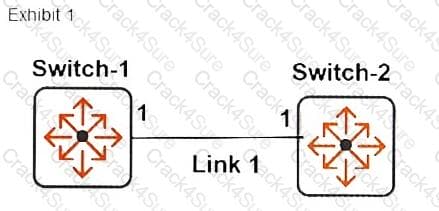
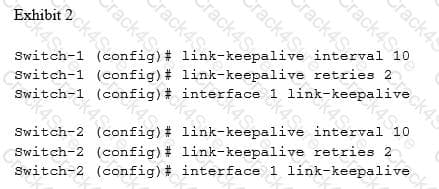
The network administrator enters the commands shown in Exhibit 2, and Switch-1 and Switch-2 exchange keepalive messages. What is the expected behavior if Switch-1 later fails to receive keepalive messages from Switch-2?
Refer to the exhibit.

Network administrators need to determine if the QoS settings on their AOS-Switches still meet their needs. Interface 1 is a 1 Gbps interface. Assume that the interface needs to forward this amount of traffic during a time of congestion:
Given the exhibit, how much bandwidth is available for the default traffic?
AOS-Switch runs IGMP in data-driven mode. What behavior does it exhibit?
Network administrators need to configure a BGP neighbor on an AOS-Switch. What defines the neighbor as an iBGP neighbor?
A company has AOS-Switches deployed at sites with inexperienced IT staff. The main office network administrators want to track if configurations change on branch switches.
What should be set up for this purpose?
A network administrator needs to control traffic based on Ethertype and Class of Service. What should the administrator configure for this purpose?
Refer to the exhibits.
Exhibit 1
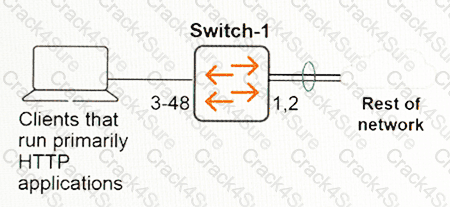
Exhibit 2
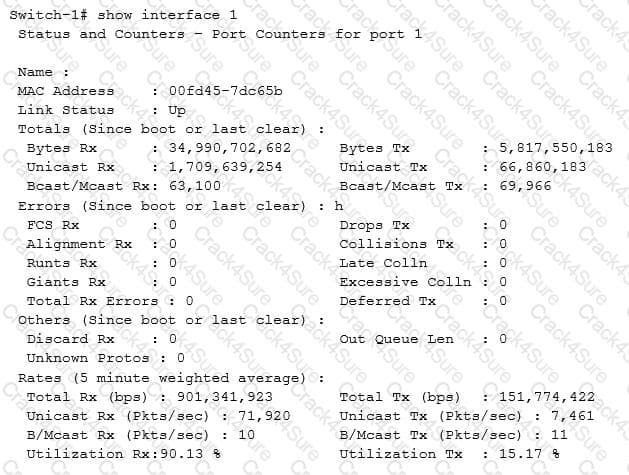
Network administrators are alerted to high interface utilization on a switch by a management solution. They examine the utilization on the uplink interfaces several times an hour during problem times. The exhibit shows output typical of times of congestion. The administrators want to allocate bandwidth fairly and reduce congestion on the uplinks.
What could help meet these requirements?
A network administrator needs to configure PIM across several AOS-Switches in the same routing domain.
What correctly describes how they can implement PIM modes?
Refer to the exhibit.
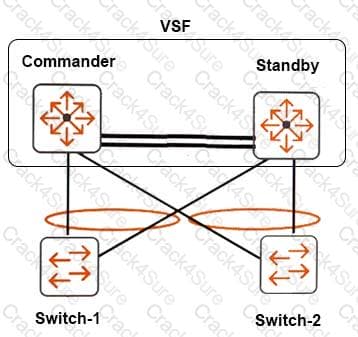
A known unicast packet is received from Switch-1 on the standby and must be forwarded to Switch-2. How does the VSF fabric decide which port in the aggregated link should forward the packet?
How far do OSPF link state updates (LSUs) for Type 1 (Router) and Type 2 (Network) LSAs propagate?
Two AOS-Switches are directly interconnected. The network administrator wants to prevent broadcast storms and other Layer 2 issues that could occur if there is physical damage to a cable.
Which technology should the administrator implement on the connected switch interfaces?
The security plan for AOS-Switches calls for ARP protection. For ARP protection to function properly, which other feature should also be implemented?
Refer to the exhibit.
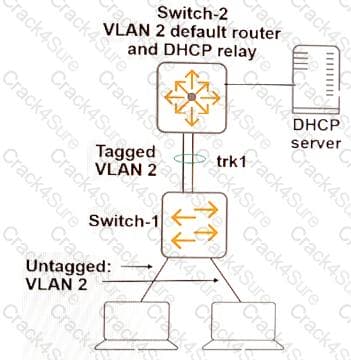
The network administrator enables DHCP snooping globally and on VLAN 2. An additional step is mandatory for DHCP snooping to operate correctly and for clients to receive DHCP settings.
What is the additional mandatory step?
Refer to the exhibit.
Exhibit 1
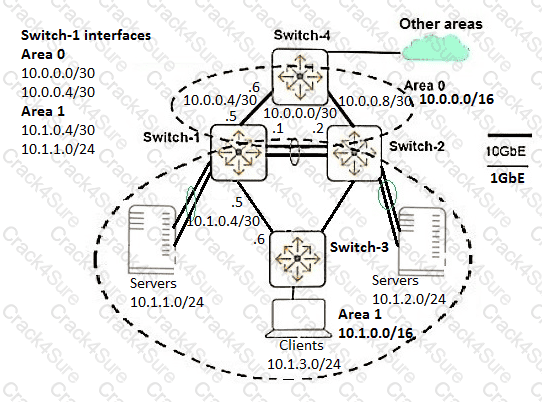
Exhibit 2
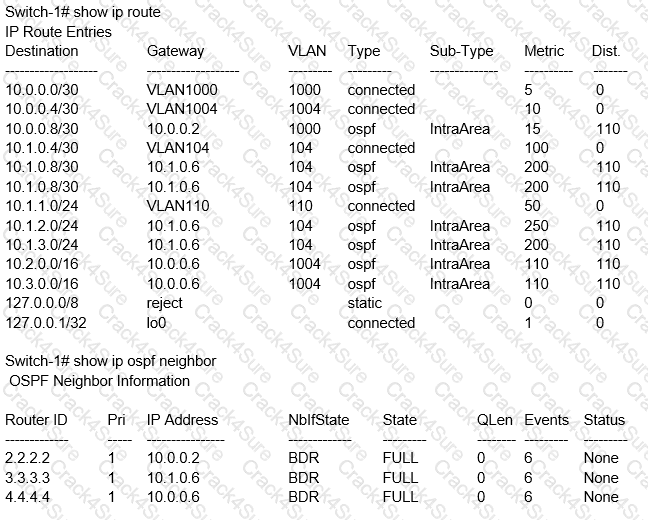
Traffic between the servers in Area 1 takes a less optimal path rather than the link associated with VLAN 1000, subnet 10.0.0.0/30. Based on the exhibits, why is this the case?
An AOS-Switch has type of service disabled on it globally. The administrator enters:
AOS-Switch(config)# interface 1 qos trust device aruba-ap
What is the effect of this command?
Refer to the exhibits.
Exhibit 1
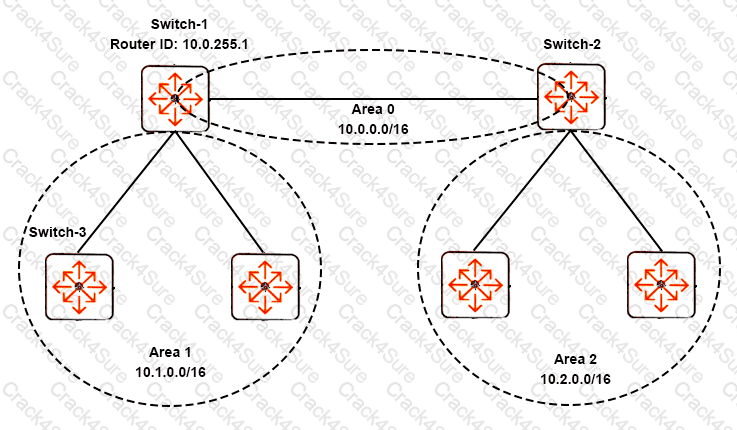
Exhibit 2
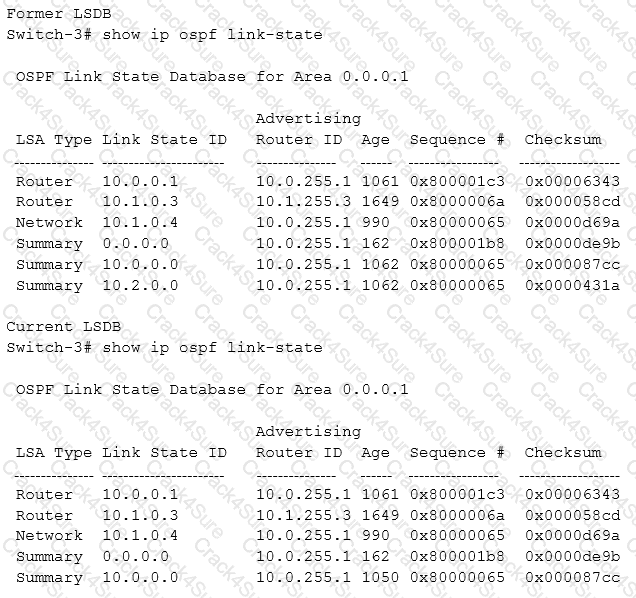
A network administrator needs to understand why endpoints that use Switch-3 as their default router can no longer reach some resources. The exhibit shows the OSPF link state database (LSDB) on Switch-1 when the OSPF solution was first deployed and the current LSDB.
What is a likely place to find the issue?
What is one difference between BPDU protection and root guard?
Refer to the exhibit.
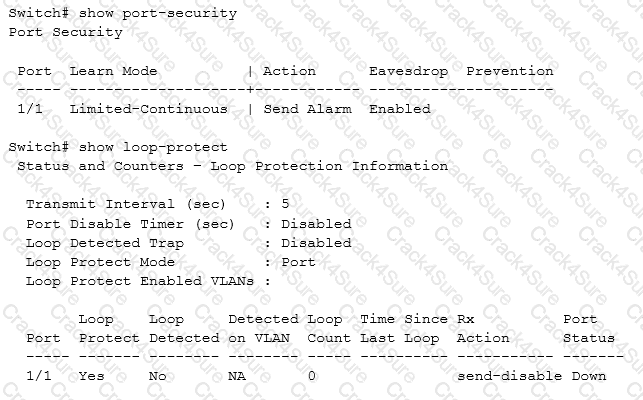
An AOS-Switch connects to an unmanaged switch in a meeting room. The exhibit shows security settings for this port. Users report that they sometimes lose connectivity and then get it back.
Which best practice should network administrators follow to avoid this issue?
Two 5400R AOS-Switches are OSPF neighbors. The network administrator wants routing paths to update as quickly as possible in the event of a failure on a neighboring switch.
Which technology should the administrator implement on the connected switch interfaces?
OSPF Area 1 has two ABRs. One ABR is configured with this range for Area 1: 10.10.0.0/16. The other ABR is configured with this range for Area 1: 10.10.0.0/17.
Which type of issue occurs due to this mismatch?